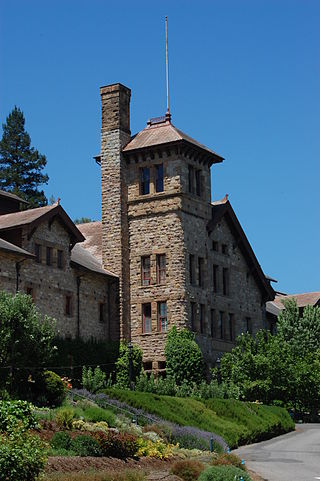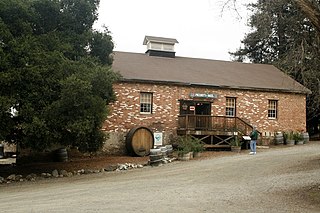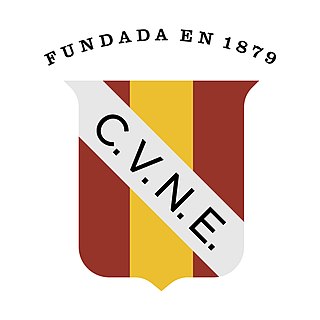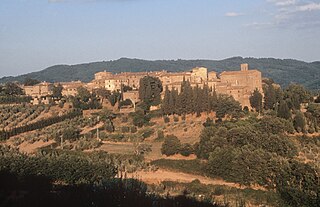
The Culinary Institute of America at Greystone is a branch campus of the private culinary college the Culinary Institute of America. The Greystone campus, located on State Route 29/128 in St. Helena, California, offers associate degrees and two certificate programs in culinary arts and baking and pastry arts. The CIA at Greystone and the Culinary Institute of America at Copia make up the school's California branch.

Stonyfell is an eastern suburb in the foothills of Adelaide, Australia, within the council area of the City of Burnside. It has parks with walking tracks, and two creeks running through it. St Peter's Collegiate Girls' School is the only school in Stonyfell. There is a quarry and a winery, the present-day remnants of industries dating back to the early days of the colonisation of South Australia.

Trefethen Family Vineyards is a winery in Napa Valley. It was established in 1968.

The Picchetti Winery, also known as the Picchetti Ranch, is a winery located at 13100 Montebello Rd., Cupertino, California in the Picchetti Ranch Open Space Preserve. The Picchetti brothers, Secondo and Vincenzo, for whom the ranch was named, were among the earliest settlers to plant grapes on this ridge, which they named "Monte Bello" or "beautiful mountain." This ridge was later to become one of Santa Clara County's important vineyard areas.

Quixote Winery is a boutique winery in the Stags Leap District of Napa Valley, California. The winery produces organic red wine in the premium segment, and also features unusual, eclectic architecture and label design.

The El Dorado AVA is an American Viticultural Area located in El Dorado County, California, United States. Wine grape growers in the region produce a large diversity of varietals, notable varietals are Zinfandel, Barbera, Cabernet Sauvignon, Merlot and Petite Sirah and there are significant plantings of Rhône varietals. Located in the foothills of the Sierra Nevada mountains, vineyards are found primarily at elevations between 600 feet (183 m) and 3,500 feet (1,067 m) above sea level and some of the historic and revered vineyards are planted above 2,000 feet (610 m) elevation. The region benefits from the cool breezes that come off the mountains and push hot air off the vines and down to the valley. The soils of the region are magma based with high levels of acidity.
The Willow Creek AVA is an American Viticultural Area located in the Humboldt and Trinity counties of northern California, near the town of Willow Creek. Surrounded by the Klamath Mountains, the AVA includes 6,000 acres (2,428 ha) in the center of the Six Rivers National Forest, and has 6 vineyards, one active winery, Miles Garrett Wines and 30 acres (12 ha) in wine grape production.

Gaja is an Italian wine producer from the Piemonte region in the district of Langhe, chiefly producing a number of Barbaresco and Barolo wines, and later diversified into Brunello di Montalcino and "Super Tuscan" production. Its current owner and president Angelo Gaja is credited with developing techniques that have revolutionised winemaking in Italy, and terms such as "the undisputed king of Barbaresco", and "the man who dragged Piedmont into the modern world" have been applied to him, and whose Barbaresco wine is considered a status symbol on a par with Château Lafite Rothschild or Champagne Krug.

The Compañía Vinícola del Norte de España (CVNE) is a family winery which was founded in 1879 in Haro, La Rioja, Spain. It belongs to the DOCa Rioja.

Dalwood House is a heritage-listed homestead and now house museum at Dalwood Road, Branxton, Singleton Council, New South Wales, Australia. It was built from 1829 to 1838 by George Wyndham. It sits in the grounds of the former Wyndham Estate winery. It was added to the New South Wales State Heritage Register on 2 April 1999.

Sokol Blosser Winery is a vineyard, tasting room and winery facility located northeast of Dayton, Oregon in the Red Hills of Dundee in Yamhill County. It was founded by Bill Blosser and Susan Sokol Blosser in 1971 in what is now known as the Dundee Hills AVA. Sokol Blosser Winery is family owned and operated by second-generation co-presidents, siblings Alex and Alison Sokol Blosser, and is the 6th largest wine producer in Oregon. Sokol Blosser is considered to be “synonymous with sustainability,” and produces Pinot Noir, Pinot Gris, Chardonnay, proprietary blends Evolution White and Evolution Red, a range of other Evolution wines, and small quantities of single block Pinot Noirs, Rosé of Pinot Noir, White Riesling dessert wine, and sparkling wine.

Cline Cellars Winery is a family owned and operated winery located in the Carneros wine appellation of Sonoma County, California that specializes in Zinfandels, Rhône-style wines, Chardonnay and Pinot Noir.

Gold Seal Winery is a historic winery complex located near Hammondsport in Steuben County, New York, United States. The primary building on the complex is in the Italianate style and constructed in 1865. It is a three-story, 54 feet by 110 feet, stone structure built into a hillside. It features a bell tower, gable roof with dormers, stuccoed upper stories, and barrel vaults. The original building was enlarged on at least six occasions. A long, narrow stone addition was built in 1890 and expanded in 1903-1903 with a mansard roof in the Second Empire style. Another major addition was built in 1884 and expanded in 1887. It included a champagne fluting room, an additional storage vault, and tasting porch. A 54 feet by 109 feet addition of reinforced concrete was built in 1912. Other contributing buildings are the Pornace House (1909) and brandy distillery (1865).


Silver Oak Cellars is a family-owned, California winery dedicated to producing only Cabernet Sauvignon. Silver Oak was established in 1972 by Ray Duncan and Justin Meyer. It is currently operated by Ray's sons David Duncan, who serves as the President and CEO, and his brother, Tim Duncan, who serves as Executive Vice President. Silver Oak has two wineries; one in Oakville in the Napa Valley and one in Healdsburg in the Alexander Valley. The Duncan Family also established Twomey Cellars in 1999, which has wineries in Calistoga and Healdsburg.

Assmanshausen Winery is a heritage-listed former winery at Serisier Road, Toolburra, Southern Downs Region, Queensland, Australia. It was built from c. 1870 to c. 1881. It is also known as Toolburra Vineyards. It was added to the Queensland Heritage Register on 6 January 1999.

Romavilla Winery is a heritage-listed winery at 77 Northern Road, Roma, Maranoa Region, Queensland, Australia. It was built from 1877 to 1878. It was added to the Queensland Heritage Register on 14 August 2008. It closed in 2012, when the owners retired.The historic building was mostly destroyed in a catastrophic fire on 22 June 2023.

Dick Ponzi is an American winemaker, a pioneer of the Oregon wine industry and the Oregon brewing industry, and the founder of Ponzi Vineyards, one of the Willamette Valley's founding wineries. He also had a successful career as a structural engineer. Ponzi is regarded as an enological and viticultural innovator. He was a founding member and the first president of the Oregon Winegrowers Association and a founding director of the Oregon Wine Board. He and his wife also established Oregon's first craft brewery, Bridgeport Brewing Company.

The Malaguerra Winery is a historic winery located in Morgan Hill, California. The two-story winery is the oldest remaining winery structure in Santa Clara County, which stands at the eastern edge of the Valley and the foothills of the Diablo Range. It was constructed in 1869 for ranchero José María Malaguerra. The Malaguerra Winery was placed on the National Register of Historic Places on October 23, 1980.






















